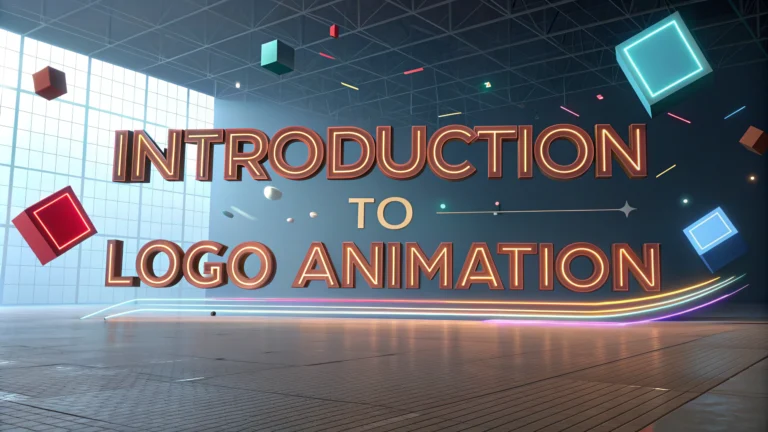Logo animation adds dynamic movement and life to static brand identifiers, transforming them into engaging visual experiences.
A well-executed animated logo can capture attention, communicate brand personality, and leave a lasting impression on viewers.
Types of Logo Animation
- Morphing: Elements smoothly transform from one shape to another
- Build-up: Logo pieces assemble to form the complete design
- Reveal: Creative transitions unveil the logo
- Character Animation: Mascots or characters come to life
- Kinetic Typography: Text elements move dynamically
Essential Software Tools
- Adobe After Effects – Industry standard for professional logo animation
- Cinema 4D – Perfect for 3D logo animations
- Adobe Animate – Suitable for vector-based animations
- Blender – Free, open-source 3D animation software
Quick Tips for Effective Logo Animation
- Keep animations under 5 seconds for optimal impact
- Maintain brand consistency throughout the animation
- Ensure the final frame shows the complete logo clearly
- Consider the animation’s purpose and placement
- Test the animation at different sizes and platforms
Common File Formats
| Format | Best Use |
|---|---|
| GIF | Web, social media, email signatures |
| MP4 | Video content, presentations |
| JSON | Web animations (Lottie) |
Animation Principles to Follow
- Start with a storyboard to plan the animation sequence
- Use easing for natural movement
- Apply appropriate timing and spacing
- Include subtle sound effects when appropriate
Test your animated logo across different devices and platforms to ensure consistent performance.
Technical Specifications
- Frame Rate: 24-30 fps for web use
- Resolution: Minimum 1920×1080 for video
- File Size: Keep under 2MB for web applications
- Format: Vector-based assets for scalability
Contact professional animation studios or freelancers through platforms like Behance or Upwork for custom logo animation projects.
Project Planning & Implementation
- Define clear animation objectives and message
- Create detailed timeline and budget
- Gather all necessary brand assets and style guides
- Establish review and approval processes
- Plan for multiple variations and uses
Advanced Animation Techniques
- Particle effects for dynamic energy
- Liquid motion transitions
- Glitch effects for tech brands
- Parallax movements for depth
- Custom physics simulations
Integration Guidelines
Digital Platforms
- Website headers and loading screens
- Social media profiles and posts
- Digital advertising campaigns
- Email marketing materials
Traditional Media
- Television commercials
- Corporate presentations
- Digital billboards
- Trade show displays
Maintenance and Updates
- Regular format updates for new platforms
- Asset organization and backup
- Version control management
- Performance optimization
Conclusion
Successful logo animation requires careful planning, technical expertise, and attention to brand consistency. When executed properly, animated logos become powerful tools for brand recognition and engagement across multiple platforms. Regular updates and maintenance ensure continued effectiveness in an evolving digital landscape.
Remember to document all animation specifications and maintain source files for future modifications. Consider creating animation guidelines as part of your brand’s visual identity documentation.
FAQs
- What exactly is logo animation and why is it important?
Logo animation is the process of bringing a static logo design to life through motion graphics and visual effects. It’s important because it enhances brand recognition, increases viewer engagement, and helps businesses stand out in digital media platforms. - Which software is best for creating logo animations?
Adobe After Effects is the industry standard for professional logo animation, while other popular options include Cinema 4D for 3D animations, Adobe Animate, and Blender. For beginners, simpler tools like Canva and Adobe Creative Cloud Express offer basic animation features. - How long should a logo animation be?
Most effective logo animations last between 2-5 seconds. This duration is long enough to make an impact but short enough to maintain viewer attention and work well across various platforms, including social media and websites. - What are the essential elements of a good logo animation?
Key elements include smooth transitions, appropriate timing, consistent brand colors, clear visibility throughout the animation, proper easing (acceleration and deceleration), and sound design when applicable. - How much does professional logo animation typically cost?
Professional logo animation costs typically range from $300 to $5000, depending on complexity, animation style, duration, and the animator’s experience level. - What file formats are best for logo animations?
The most common formats are MP4 and MOV for video playback, GIF for web use, and JSON for web-based Lottie animations. For transparent backgrounds, WebM and animated PNG formats are preferred. - Can any logo be animated?
While most logos can be animated, some designs work better than others. Vector-based logos are ideal as they can be easily separated into elements for animation without losing quality when scaled. - What are the current trends in logo animation?
Current trends include morphing animations, minimal motion design, 3D transformations, glitch effects, liquid motion, and responsive animations that adapt to user interaction. - How can I ensure my logo animation is web-friendly?
Keep file sizes small through optimization, use web-appropriate formats (like GIF or Lottie), ensure proper loading time management, and test across different devices and browsers for compatibility. - What’s the difference between 2D and 3D logo animation?
2D logo animation works with flat, two-dimensional elements and is typically simpler to create, while 3D animation adds depth, perspective, and realistic lighting effects but requires more technical expertise and rendering time.








